Hiking in Ireland – the best trails
Looking for the ultimate guide to hiking in Ireland? We’ve rounded up all the best information possible to ensure you get the most out of the Emerald Isle.
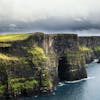
Ireland may not be the first place that comes to mind if you’re planning a hiking holiday, but it certainly shouldn’t be overlooked. Steeped in history, with a rugged and beautiful coast, plenty of sizable mountains to scale, and a rich and diverse cultural history to unpack, it’s a land of exploration and adventure, and is certain to get you excited about a visit. We’ve scoured the guidebooks to assemble what we feel is the ultimate guide to getting around and getting the most out of this awesome [almost] island, so if you’re ready to go, then pack your bags, because there’s never been a better time than right now.
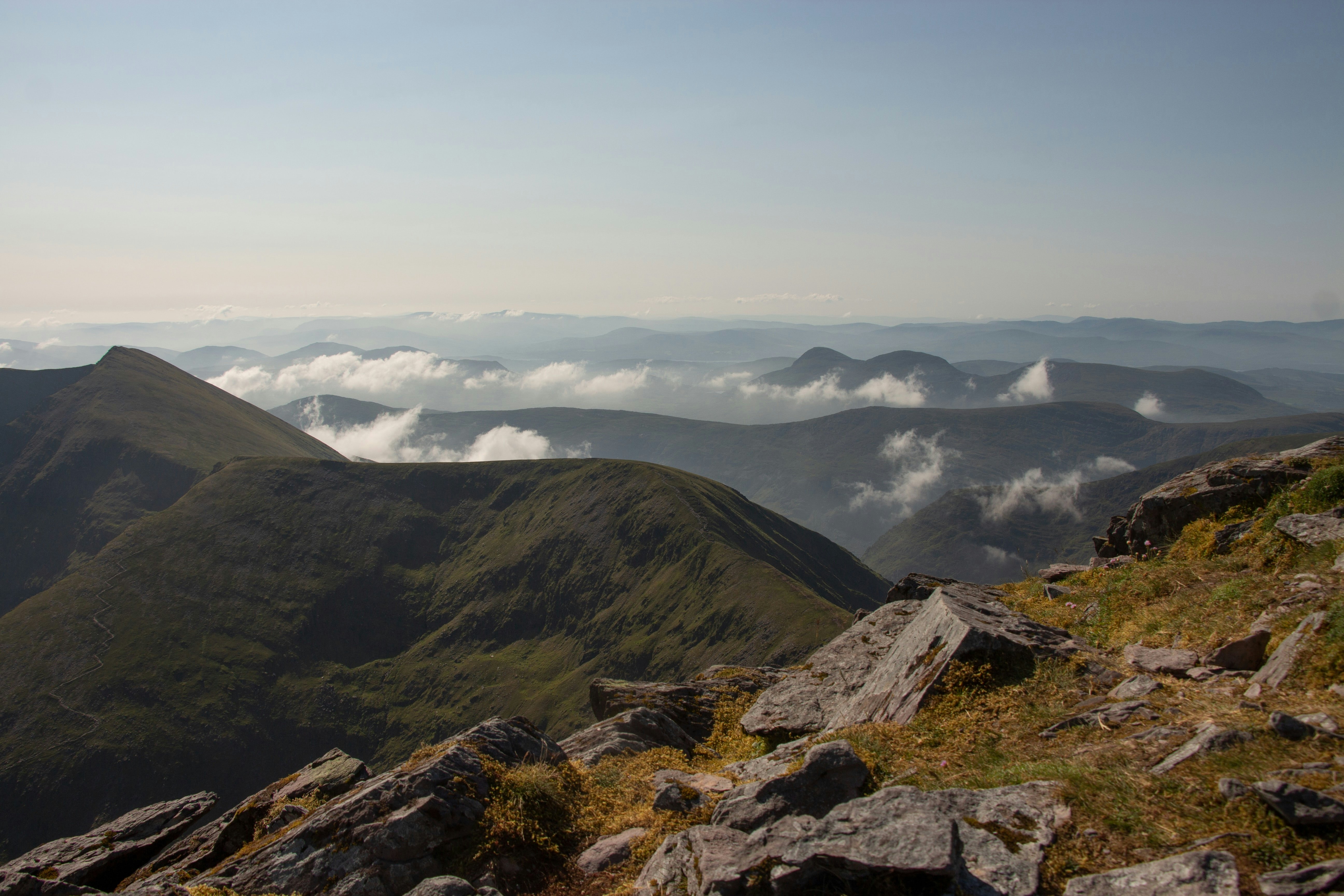
Essential Gear for Your Irish Hiking Adventure
Before setting out to explore Ireland's breathtaking trails, make sure you're well-equipped for the journey with appropriate clothing. Don't miss out on our latest collection of men's outdoor jackets and women's outdoor jackets to stay comfortable and stylish during your adventure.
Table of contents
Where in Ireland should you go?
The question of where the best hiking to be had in Ireland is a complicated one. Depending on what you’re in the mood for, you can pretty much head out in any direction and find something exciting. Ireland has everything that the rest of the UK has, along with a frosted Guinness tap in every pub, too. If you’ve checked out the sunny south coast of England, you’ll find those rolling hills here, too. If you’ve fallen in love with the Scottish highlands, there’s plenty of that, too. Stunning lakes and lush forests? Check. Brutal, exposed, craggy mountains à la North Wales? Buckets of the stuff! Dizzying cliffs falling away to primordial seas? You betcha. Let’s dig into some of the specifics before we get onto the list, shall we?
Ireland weather and geography
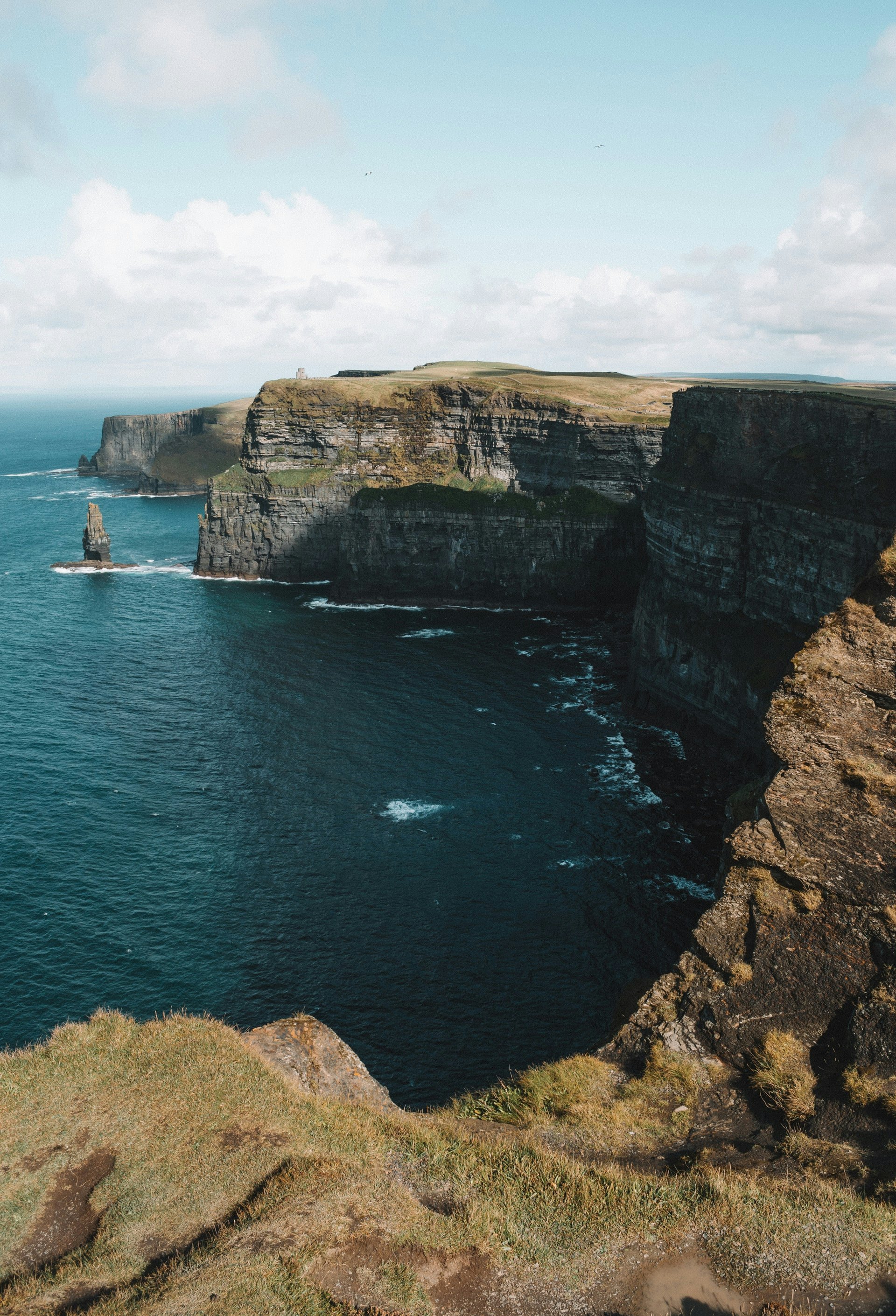
One of the great things about hiking in Ireland is the fairly temperate climate. With slightly more stable temperatures than the UK, due mostly to its slightly closer proximity to the gulf stream. This warm, wet current of air flows up from the Caribbean, carrying with it plenty of heat, dumping it onto Ireland’s Atlantic shore, causing the climate here to be changeable, and relatively, but rarely blisteringly cold or unbearably hot. As such, there’s no real good or bad time to arrive. You’ll rarely encounter snow, either, so plans can be made in advance, all year round. Though we always recommend preparing for wet weather, as Ireland does receive a lot of rain, 200+ days a year in some places!
In terms of the geography of the country, there are a variety of what are known as geological provinces. In the west, around County Galway and County Donegal, is comprised mostly of igneous and metamorphic rock, much in the same way that the Scottish Highlands and Scandinavian mountains are, giving a craggy, half-exposed sort of look with plenty of scrambling to be had over the rugged peaks there!
In the south, along the County Wexford coastline, you’ll find grander granite slab mountains, like you would in Wales, with steep, layered sides, and plenty of grass and meadow in between. More to the east and across the centre of the country, you’ll find an abundance of rich soil, which means lush meadows and forests, along with some picturesque lakes, historical features, and plenty more to get you excited for!
Though, there's a lot to explore in every corner, so we recommend organising transport for the whole country if you are lining up a visit here!
The most spectacular mountain hikes in Ireland
When it comes to mountains in Ireland, you’re not spoiled for choice. Despite the highest peak in the country, Carrauntoohil, being just 1035m tall, 50m shorter than Snowdon in Wales, and 300m shorter than Ben Nevis in Scotland, there are still a lot of great mountains to hike here. With some amazing scenery, including rare coastlines to look down on, there’s no better place to start with a hike than these great mountain picks.
Carrauntoohil, County Kerry
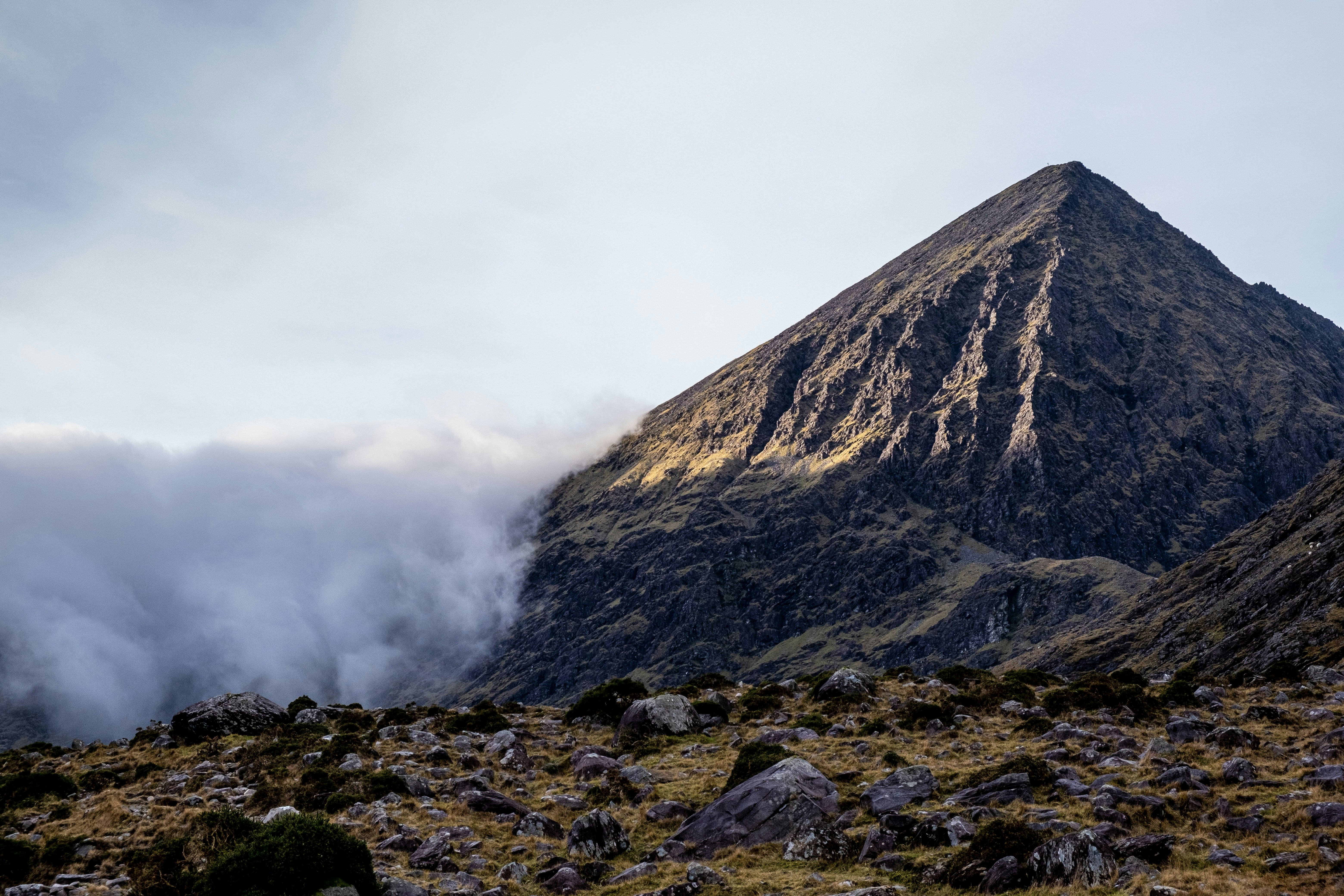
The highest peak in Ireland, this 1,038m beast is part of the Macgillycuddy’s Reeks mountain range, and can be reached by heading west from Cork. Once you reach Killarney, you’re almost there. From the top you’ll have amazing views of both land and sea, and will certainly revel in both the reward and the process. The most popular route is the ‘Devil’s Ladder’, which is mostly tracked, but does include some more difficult sections, making it unsuitable for those looking for an easy challenge. If this is the case, we suggest heading for one of the more accessible nearby peaks. This 12km climb will take around 4 to 6 hours to do (top and back), but is more than worth it. If you’re looking for an even tougher route, consider Brother O’Shea’s Gully, which includes steep scrambles (not to be tackled in the wet!), or even Coomloughra Horseshoe, which includes some precarious navigation across some knife-edge ridges. Check for wind speeds before considering this one!
Slieve Donard, County Down
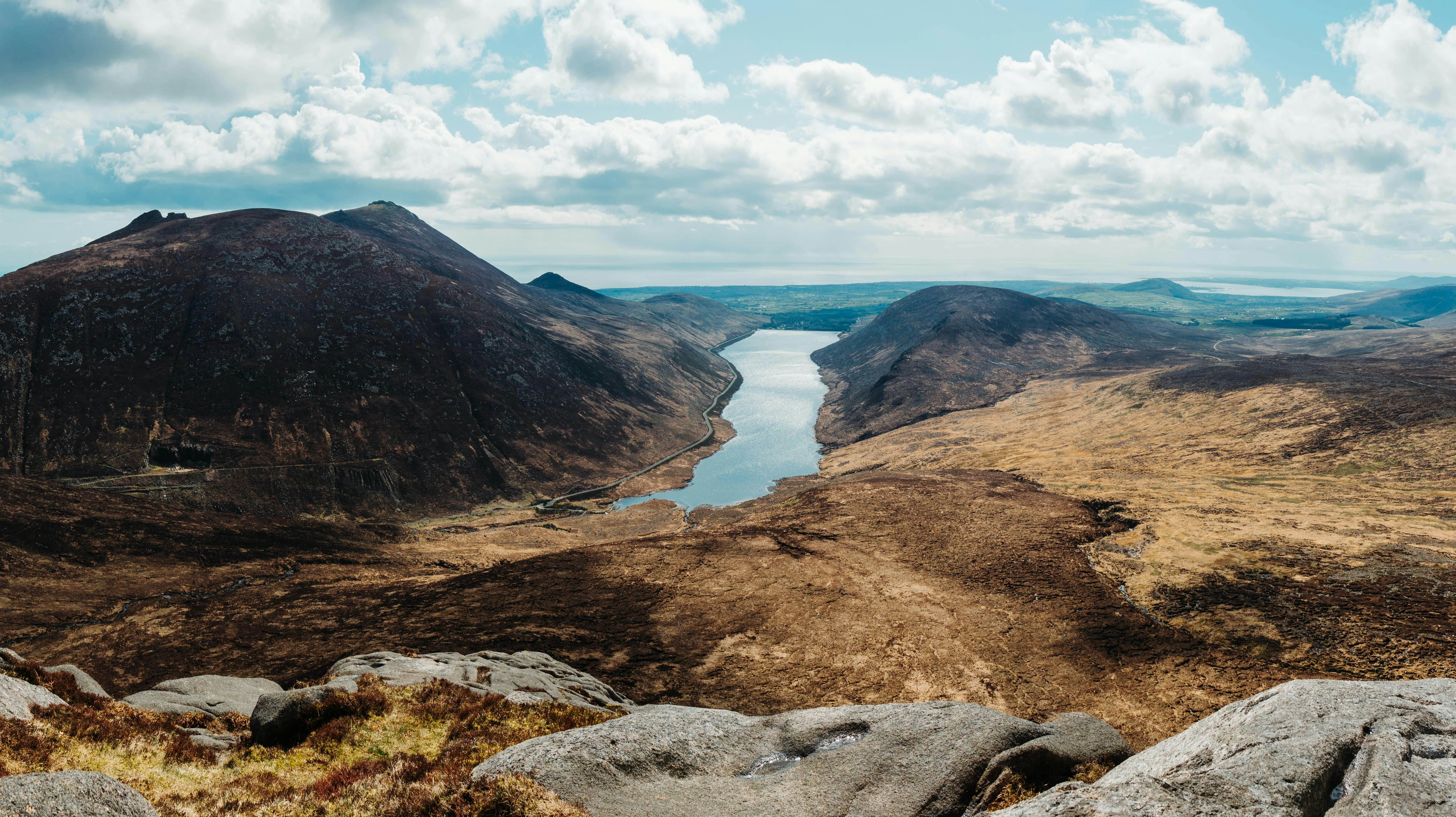
Slieve Donard tops out at 850m, but thanks to its location in the northern part of the country, on a clear day, you can see out to Scotland, England, and Wales. It’s a tough climb, but not nearly as challenging as Carrauntoohil. The popular Glen River track is a 9km out and back trail that offers up the full 850m of vertical, taking between 5 and 6 hours to complete depending on your speed. While other routes are available, this track starts at Newcastle, winding up next to the churning Glen River through the Donard Forest until it breaks into open wilderness, giving you a look at the Mourne Wall, which is made up of 15 summits spanning more than 30km in length. The top is still a long way to go, though, so pack plenty of supplies, this hike isn’t for the faint of heart!
Mount Brandon, County Kerry
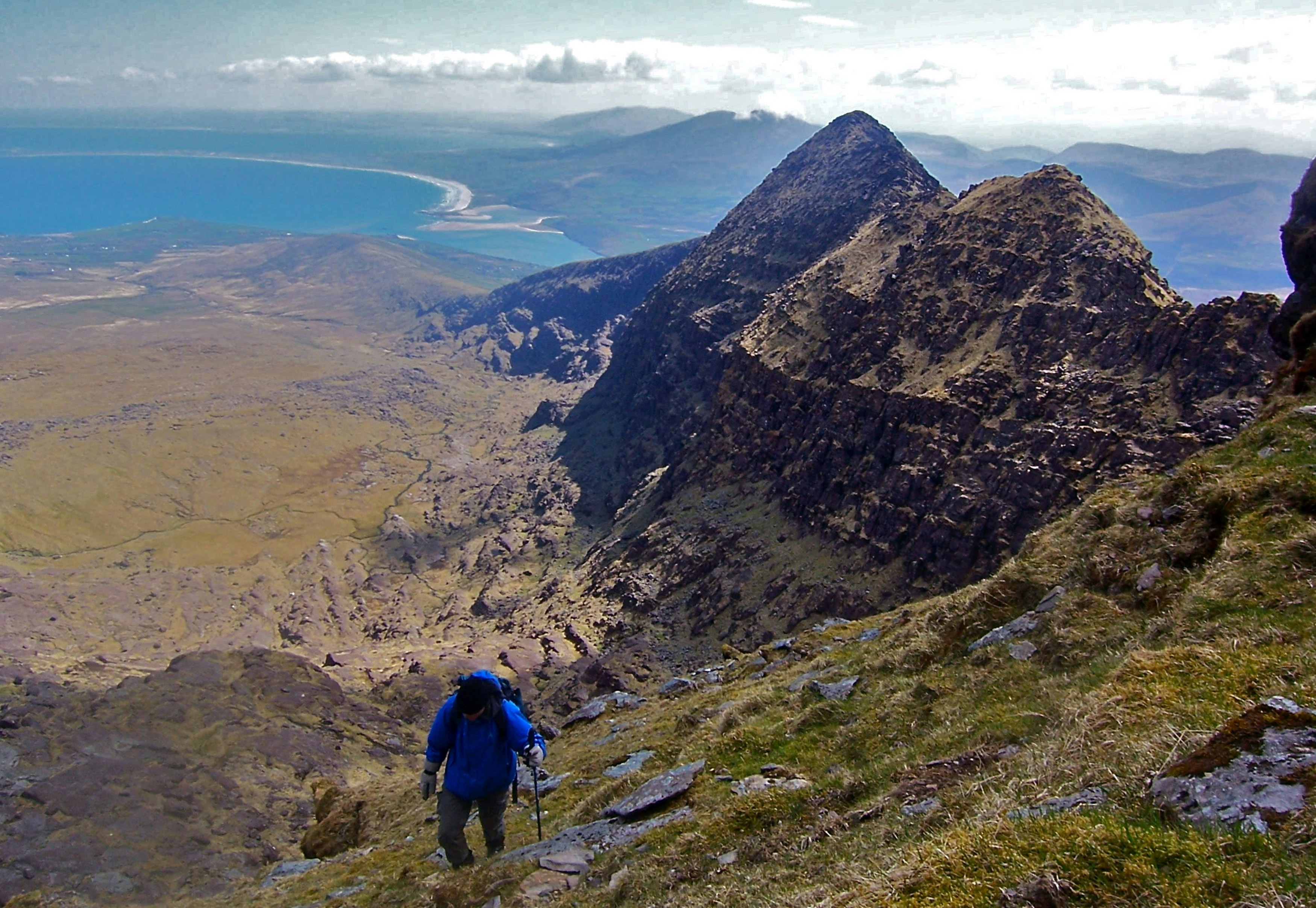
At 952m in height, Mount Brandon is no slouch. Located along the Dingle Way, it’s one of the tallest mountains in Ireland but is somewhat less intimidating a walk than the two peaks above. However, located near Dingle, it’s one of the most exposed hikes in Ireland, meaning the weather rolling in off the Atlantic can be brutal, so plan accordingly. This 11km climb can be made from the start point near the Faha Grotto and can take 6 to 7 hours to complete in full. Choosing a clear day for this is a must, as the coastal views are truly epic. There’s also a WWII plane wreck to check out along the way, the Faha Grotto itself, and plenty of lakes and valleys to goggle at. Link this climb in with the Dingle Way below, or do it in isolation. Both are amazing choices.
Croagh Patrick, County Mayo
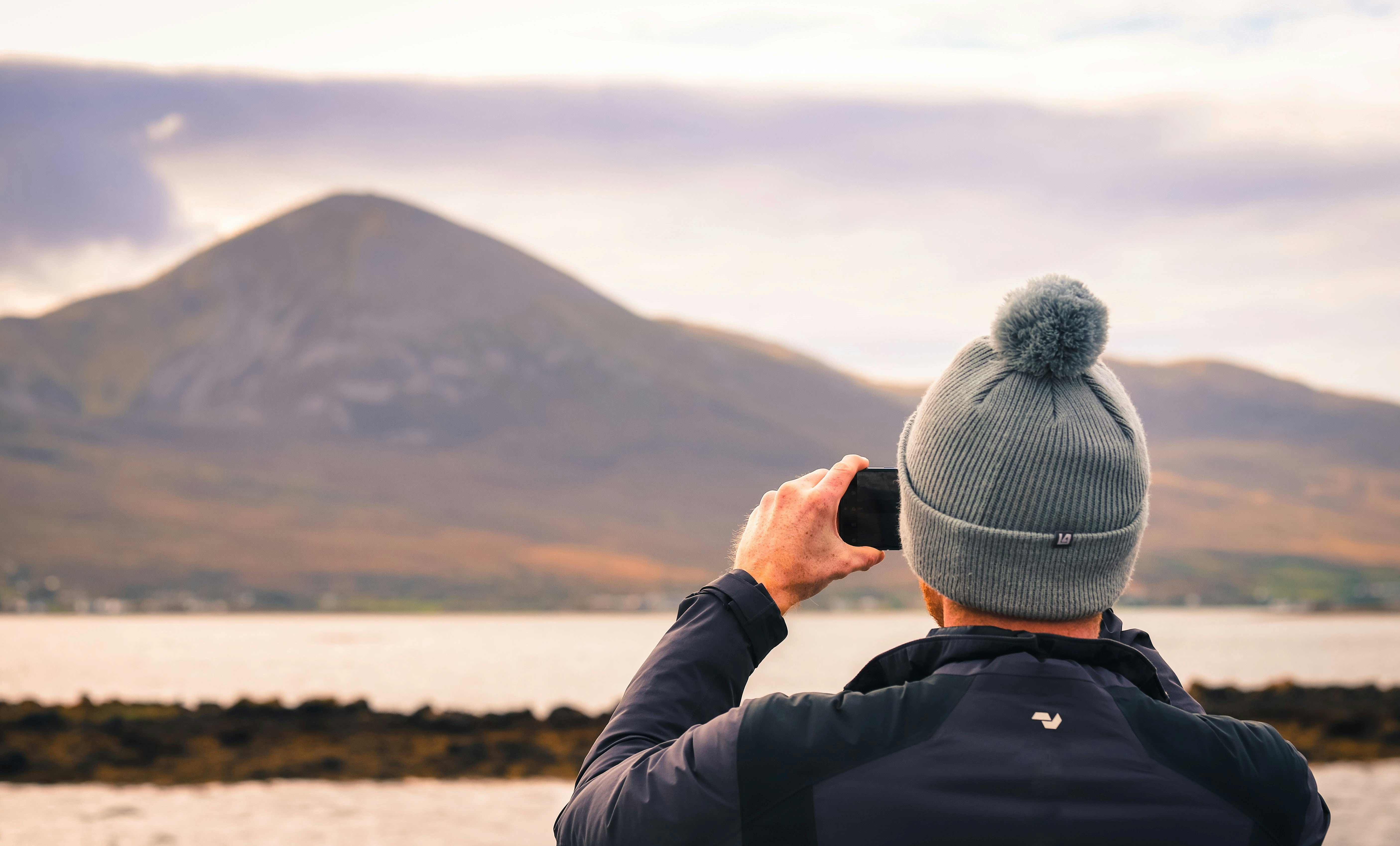
No list of Irish hikes would be complete without the Croagh Patrick ‘Pilgrimage’ walk. This 764m mountain is located north of Galway, just near Westport in County Mayo, and is the perfect hike for a morning or afternoon. This 7km out and back trail is a truly historic adventure, and while busy and well-tracked, is still worth checking off. There are hundreds of other great, uncrowded peaks if you’re looking to escape the crowds, but this one carries lots of history, so we threw it in anyway! A well-beaten path takes around 3 to 4 hours to walk and forms part of Ireland’s Wild Atlantic Way. Known as Sacred Mountain to man, and translated as The Hill Of Patrick, this mountain peak was supposedly the place where Saint Patrick fasted for 40 days in 441AD. If you want to take part in a mass pilgrimage, arrive on the last Sunday of July, Reek or Garland Sunday, and join the 25,000 walkers who make the upward journey — some of which even do it barefoot! At the top, you’ll find a church constructed in 1905, at which they’ll celebrate Mass.
Cuiclcagh Leganbrocky Trail (Stairway To Heaven), County Fermanagh
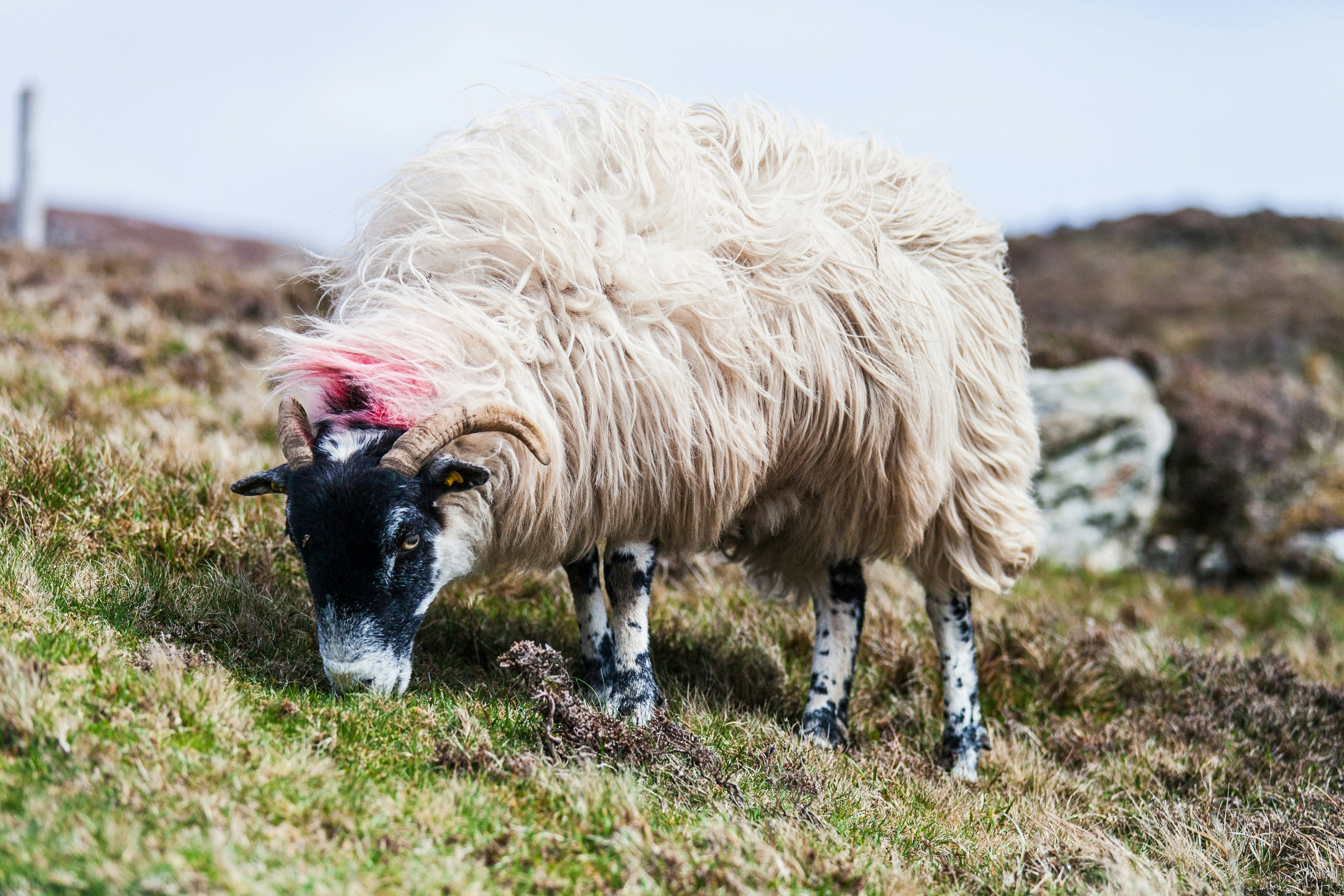
This one may not have the verticality of some of the mountains in the list above, but it’s still a stunning experience. Nicknamed the Stairway To Heaven, the route takes you through one of the largest blanket bogs in Northern Ireland, along a manmade track and wooden boardwalk, before heading up to the Cuilcagh Mountain viewing platform. Starting from the car park near Enniskillen Town (which is right near the Marble Arch Caves — which you should definitely see while you’re here!), you’ll head out along the marked path, conquering 450 steps along the way. It’ll take around 4 or so hours to complete, with a gravel trail of 5.8km giving way to a 1.6km boardwalk, making this a 14.8km walk out and back, but as it’s all very well pathed and relatively gentle in its incline, it can be dealt with quicker than some of the steeper walks above. Please note: Dogs are not allowed on this trail.
The most stunning coastal hikes in Ireland
The coastlines of Ireland are legendary. Having spent millions of years being carved up by sea ice, massive glaciers, and the unrelenting surf of the Atlantic ocean, you’re able to find everything from unique rock structures to towering cliffs, and even white, idyllic sands. So where you’re up for surfing or exploring, the coasts of Ireland are legendary for good reason.
The Causeway Coast, County Antrim
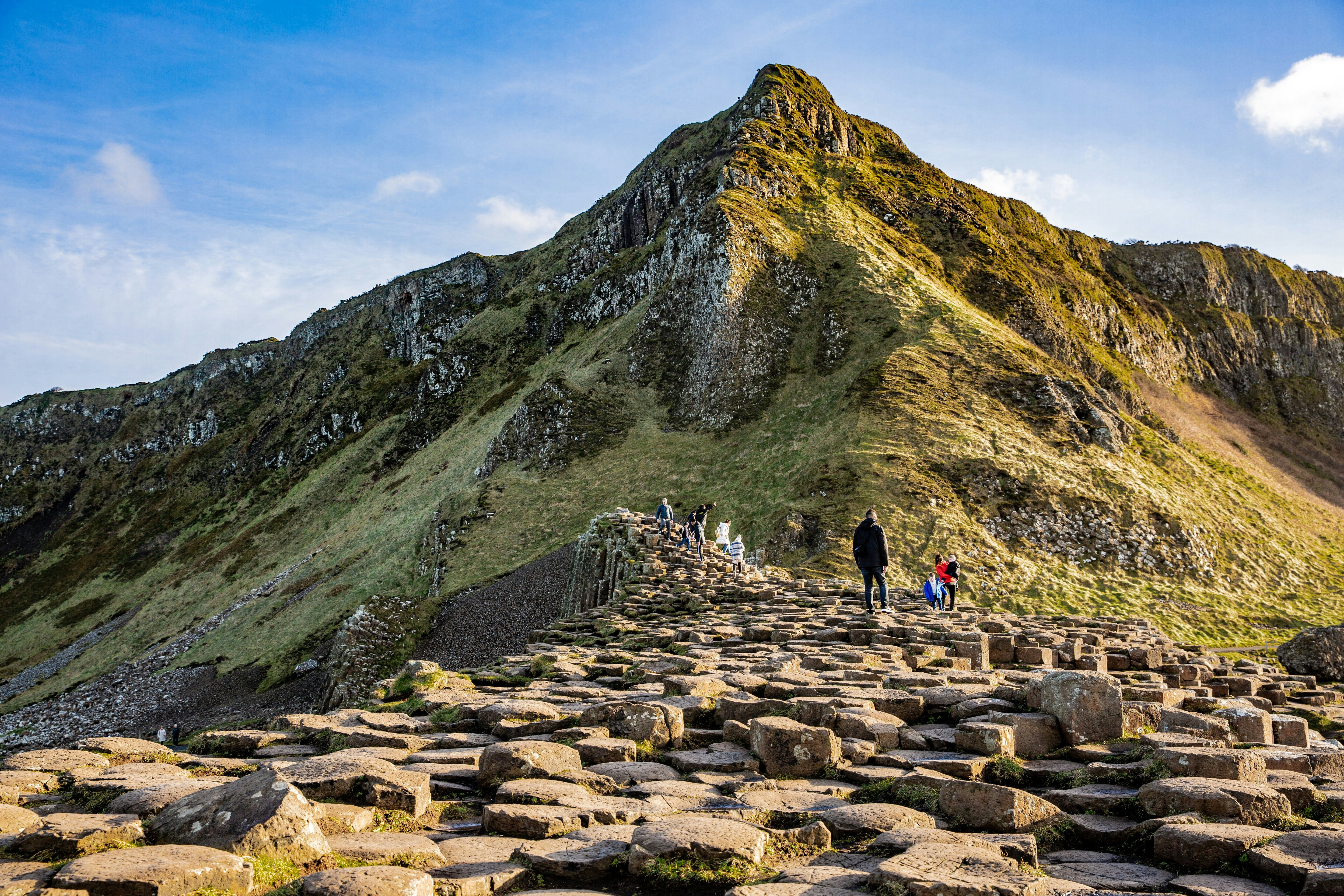
The Causeway Coast might be a slight generalisation, but it’s very difficult to nail down a single piece of it you’ll want to experience! It begins in Ballycastle and runs to Portstewart, totalling 51.3km. With a total of 11 to 15 hours of walking, depending on your pace (and commitment), you’ll complete it in anywhere from one to three days of hiking. Along the way, you’ll see some of the most sought after sights in Northern Ireland, including the world-famous Giants Causeway, the Carrick-a-Rede Rope Bridge, and the Dunluce Castle. While all can be seen in isolation, the whole trail is stunning and definitely something to be experienced.
The Tory Way, County Donegal
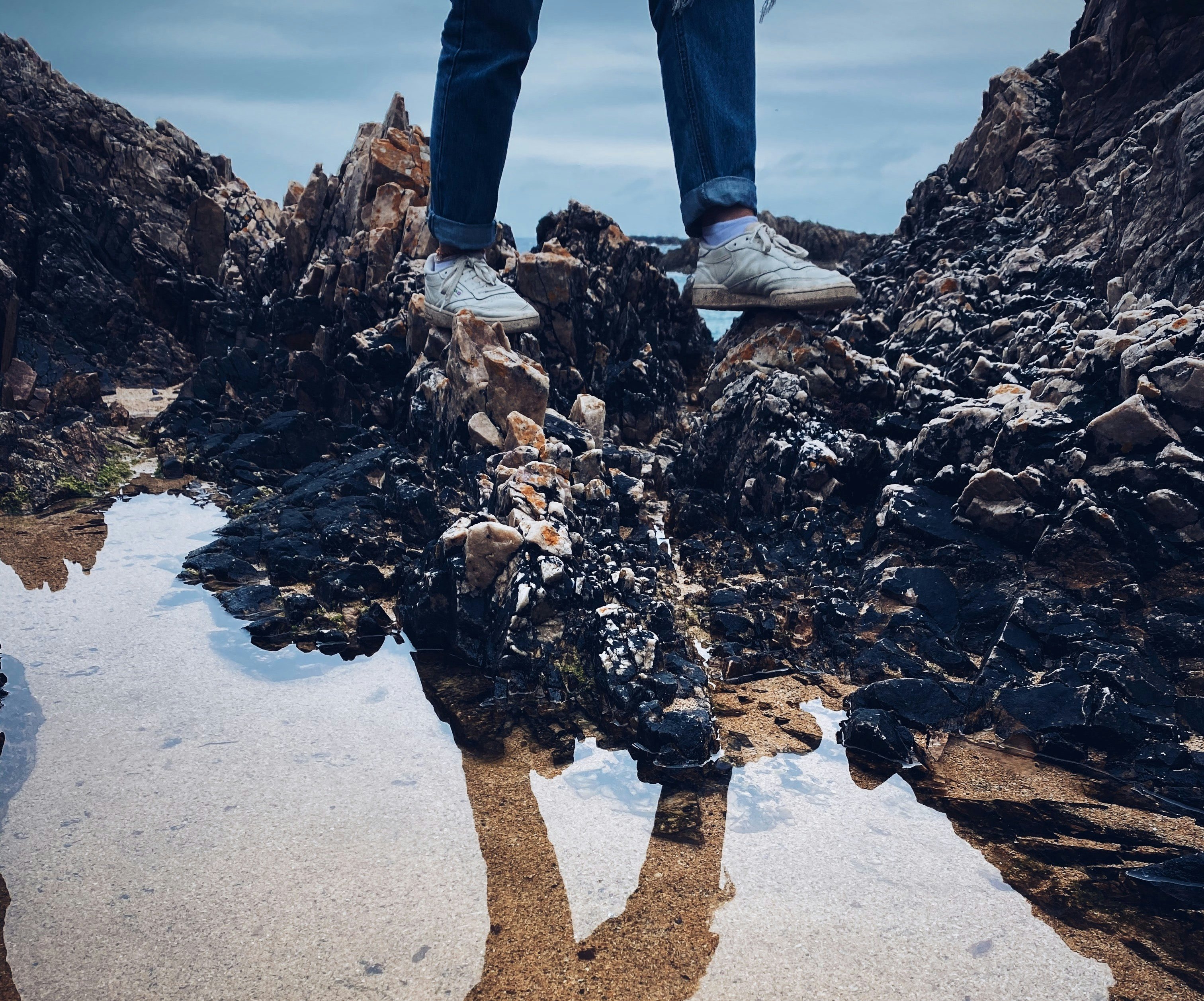
The Tory Way is a loop walk of just 8km on Tory Island itself. A ferry can be caught there during the day, and the whole walk will take two to three hours. You’ll circumnavigate the entire island in the process, reaching the famous Tory Lighthouse before circling back along the spectacular quartzite cliffs, taking in the unique sea stacks, including the Tor Mór, a 400m long blade of rock lancing up from the boiling, navy-blue sea below. Then, just hop on the ferry back to the mainland in time for a pint of Guinness!
Ballycotton Cliff Walk, County Cork
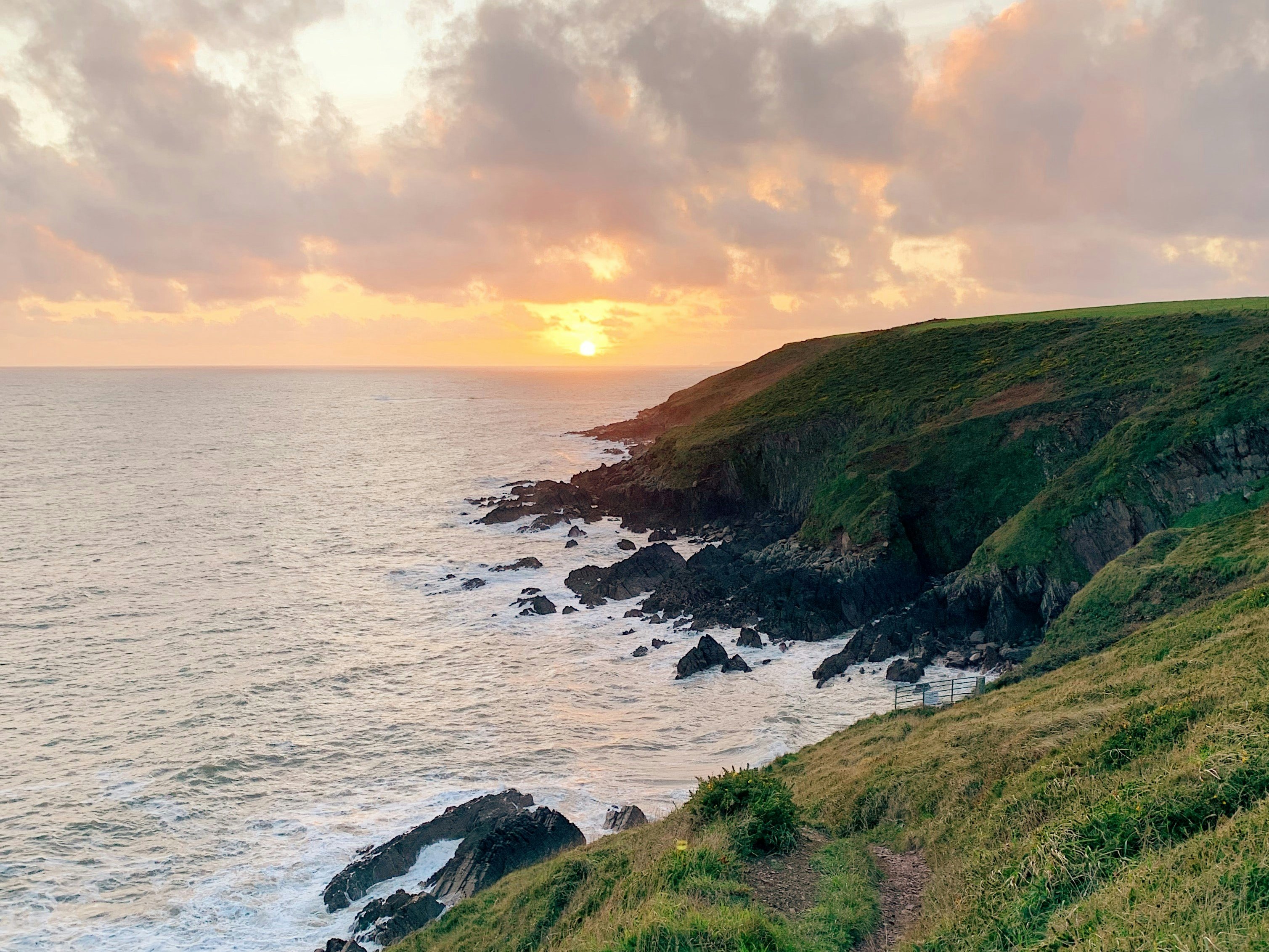
Another relatively short one, this 7km out and back trail will take around 2 hours to complete, and starts from Ballycotton Village. From there, head south to the coast, and continue along towards Ballyandreen, taking in the rugged, jagged, and stunning coast along the way. There’s plenty to see along the way, including lighthouses, secluded beaches, and plenty of stunning Irish countryside. Perhaps not the most exciting of walks, but there’s nothing quite like a cliffside stroll on a sunny day. And you know, you’re never far from a cold drink in Ireland, too!
The most intriguing historical hikes in Ireland
Would any list of hikes in Ireland be complete without a historical section? With a country this steeped in culture, we think not. Some of the routes below visit ancient ruins, others are more focused on ‘modern’ human history, but whatever you like to check out, you’re sure to never be far from it in Ireland.
The Beara Way, County Cork
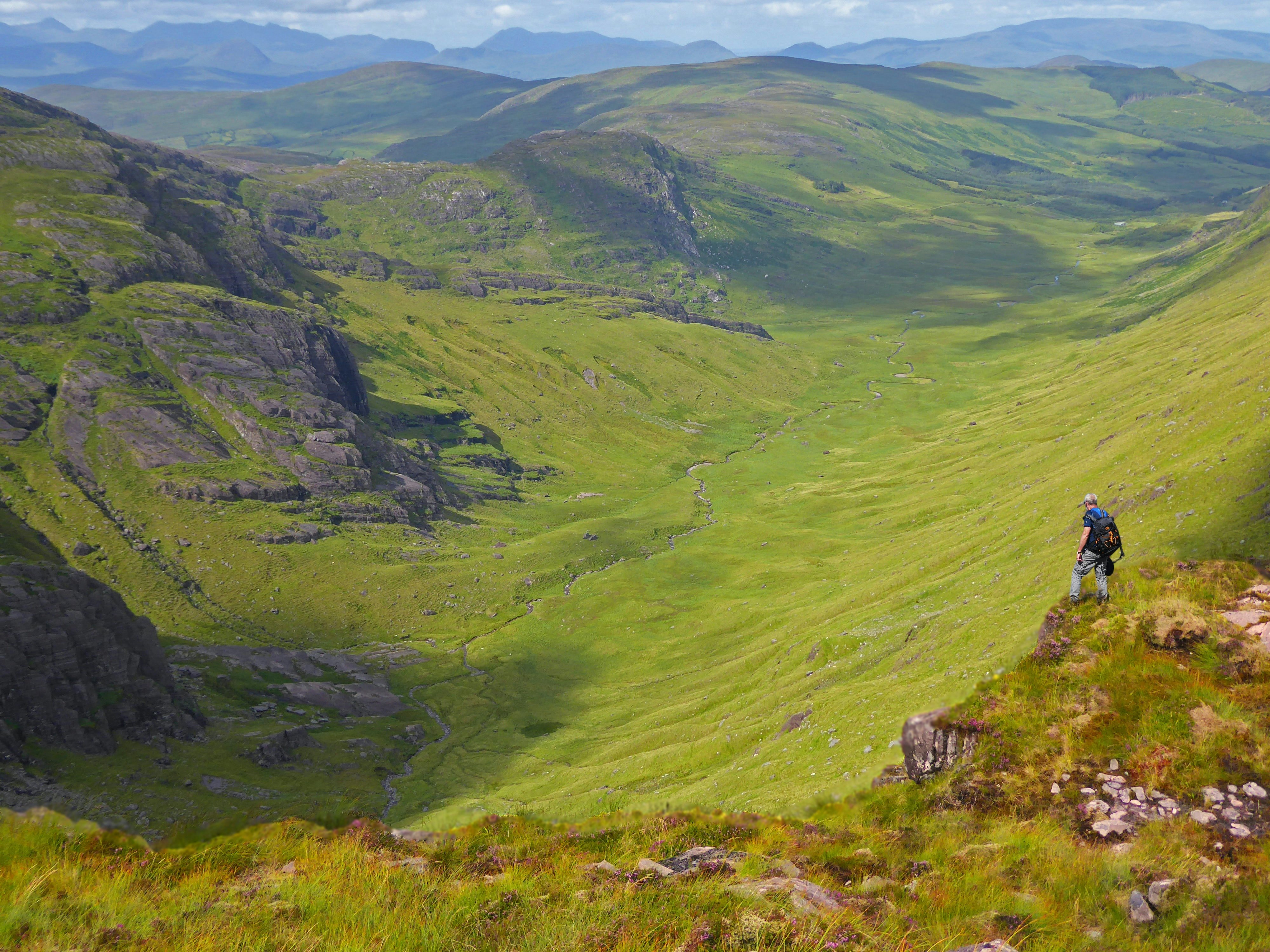
The first historical hike on our list is the mighty Beara Way. Clocking in at a mighty 152km, starting and ending in Glengarriff, it can be done in its entirety over the course of an entire trip, or in part. There’s so much to see here, from towering mountains to wild coasts, there’s something for everyone — including a number of archaeological sites from prehistoric times, with lots of burial monuments and ancient cemeteries to standing stones. Historical villages also dot the route, along with lots of other great things to feast your eyes on. There’s really too much to list here, but trust us, if you’re looking to sequester yourself to just one corner of Ireland and want to wring out all it has to offer, the Beara Way is probably the way to go!
Slieve Gullion, County Armagh
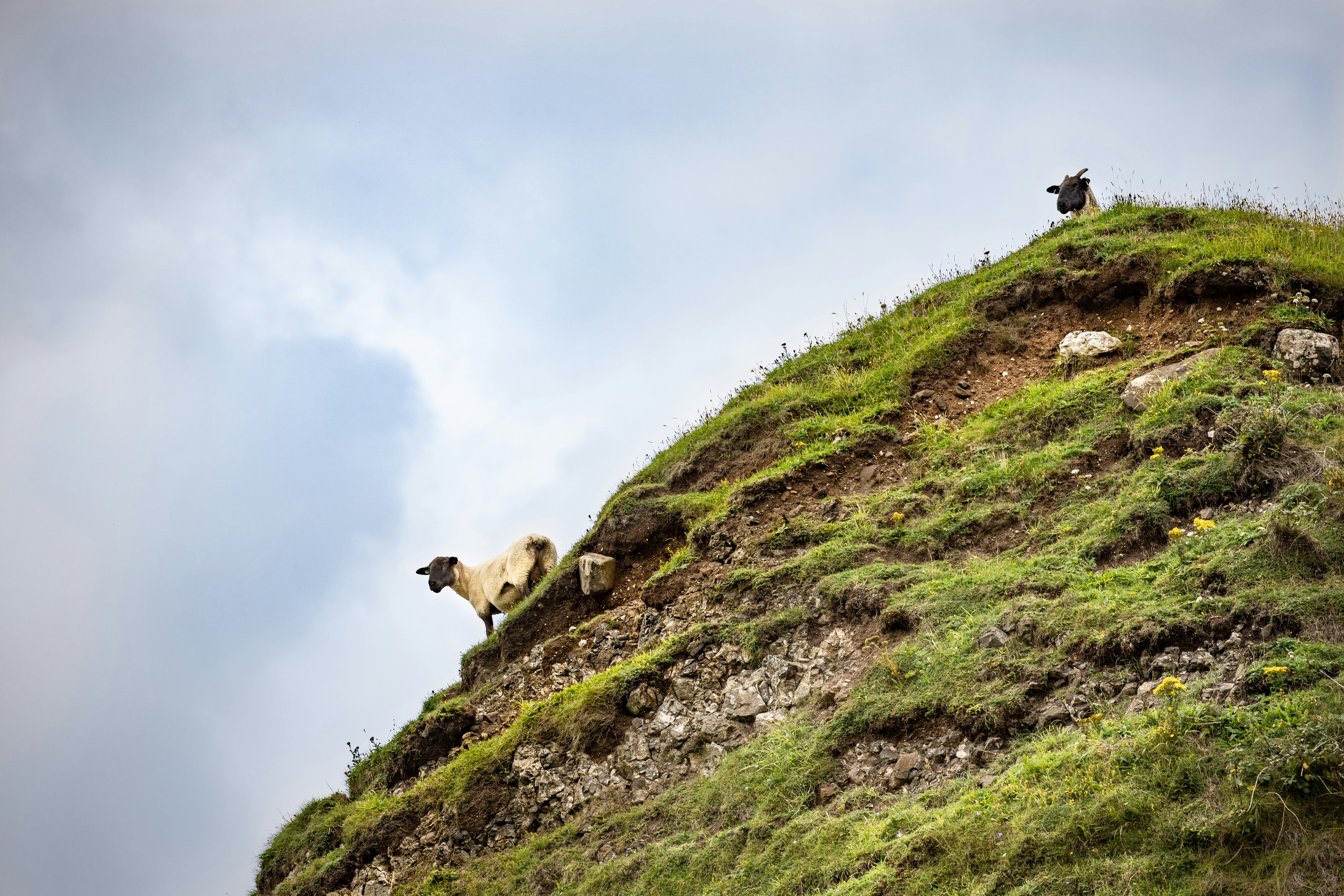
While Slieve Gullion is indeed a mountain, it’s also one that has some great historical significance, so finds its way into this list instead of our mountain hikes above. At 573m, it’s no slouch, and forms part of the Ring of Gullion, an AONB, or ‘Area of Outstanding Natural Beauty’. This volcanic structure is leftover from an eruption that took place 50 million years ago and has been home to human inhabitants for the last 6,000 years. It boasts more than 20 large stone tombs, along with lots of Megalithic and Christian monuments. Keep an eye out for the Dorsey, too, which is a huge earth embankment and rampart straddling the ancient roadway to Eamhain Macha, the ancient capital of Ulster. And if that wasn’t enough, The Ring of Gullion and Slieve Gullion are also associated with many Irish myths and legends, including the tale of Finn McCool’s bewitching by Miluchra on the summit of Slieve Gullion at the Lough of the Calliagh Bhirra. Legends still say that if you bathe in the lough, your hair will turn white. But you’ll have to be the judge of that!
Glendalough and the Spinc Cliggs, County Wicklow
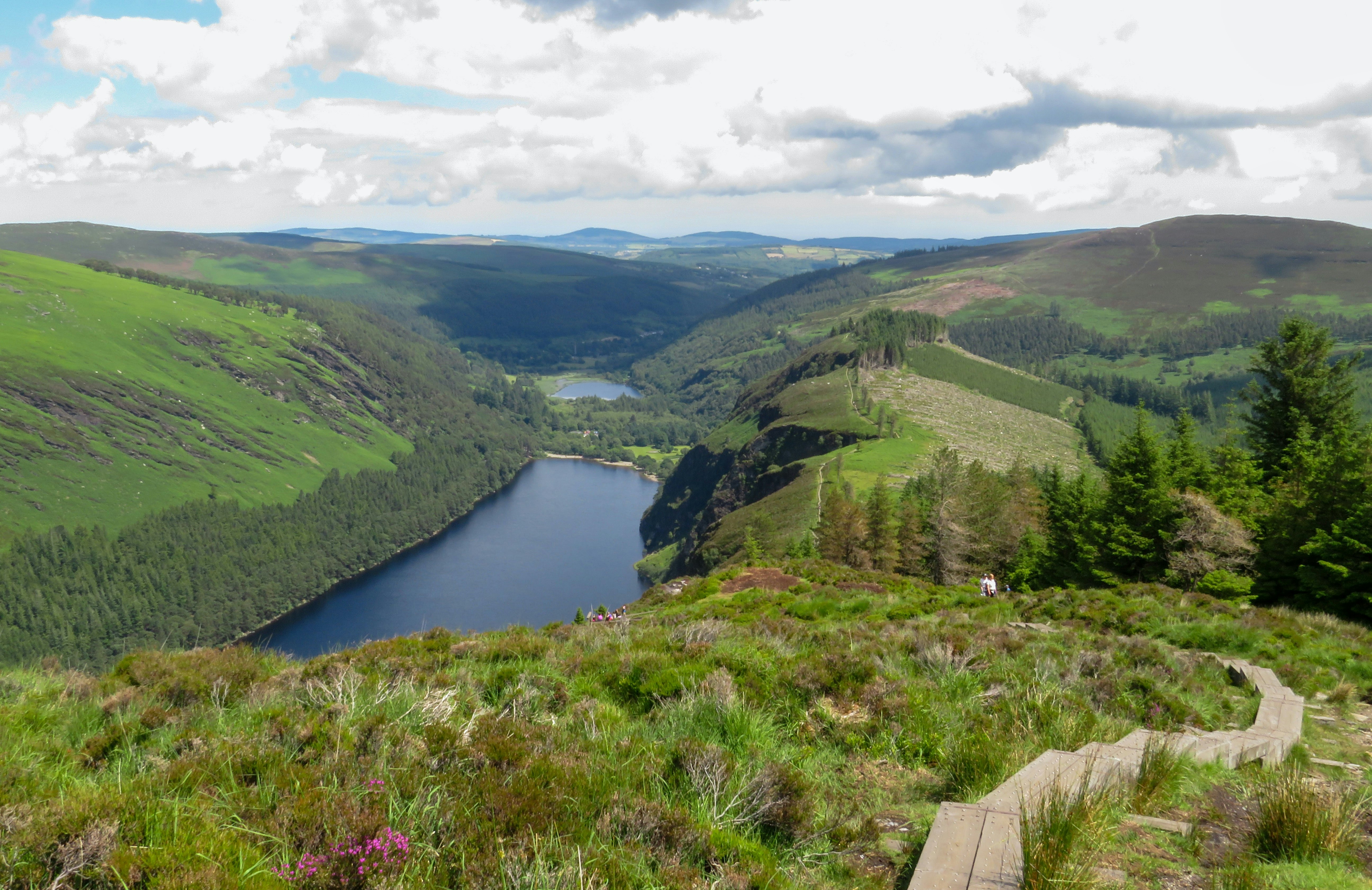
Along the Spinc ridge, there is a 9.7km route marked with white arrows, giving the trail here the name ‘The White Route’. This 3-4 hour climb will take you all around the gorgeous Glendalough Valley, and includes views of the Wicklow Uplands, the Poulanass Waterfall, the Upper Lake, and even a deserted historical Miners Village. Graded as a tough trail, there’s a mix of terrain on offer here as well as plenty to explore off the side of the trails, too. With a great boardwalk section, it’s impossible to be bored, especially with an impressive Monastic Site to get your historian goolies all aquiver.
Other amazing places to explore in Ireland on foot
While hiking is certainly the focus of this article, there were some things we just couldn’t leave off. They didn’t fit too neatly into the list above, but we’ve rounded up some extra must-sees for those doing a full Irish tour. With some truly spectacular sights to see, make sure to leave plenty of time for these bonus walks!
The Glenariff Forest Park Scenic Trail, County Antrim
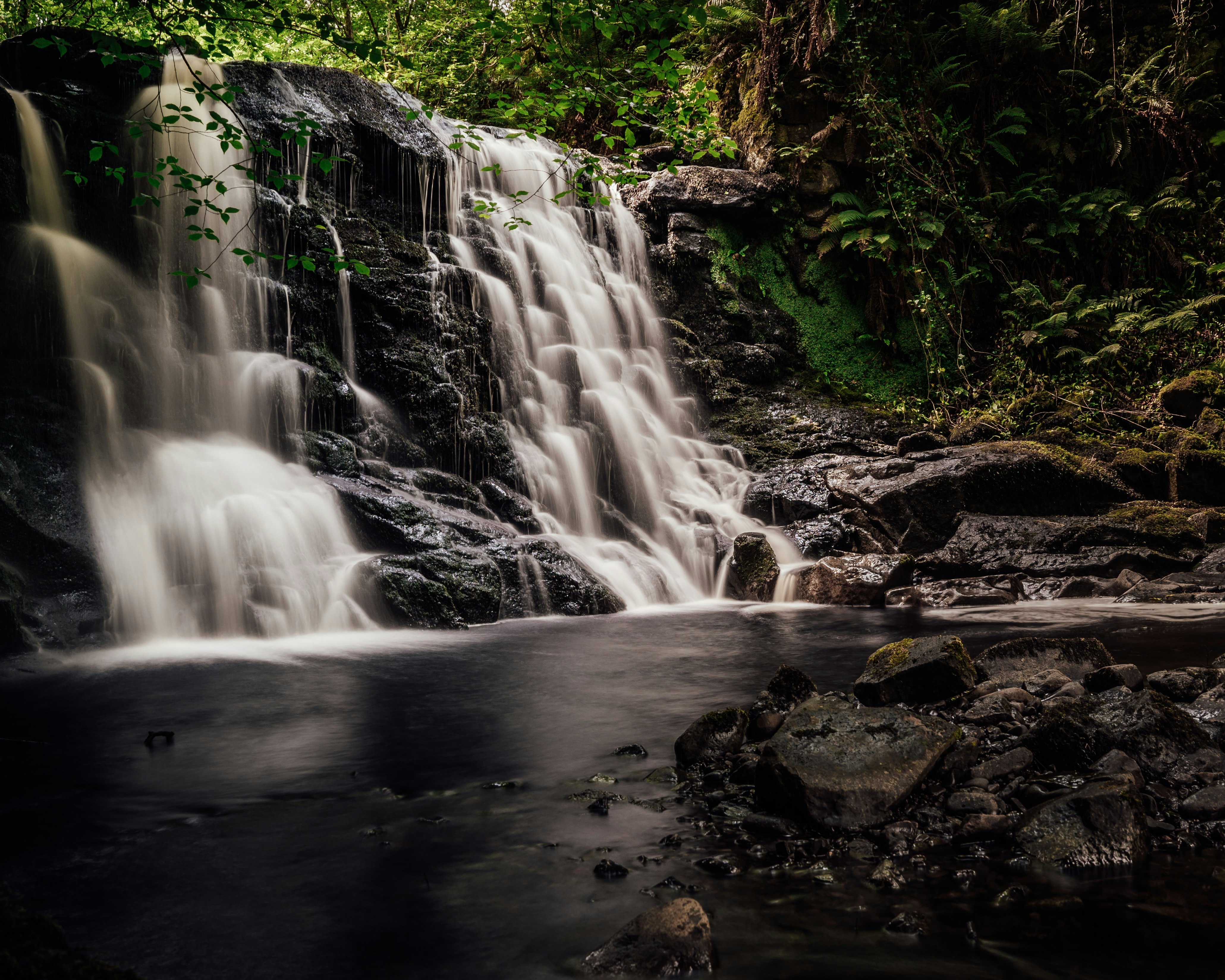
This 9km trail is a great one to serve up all the park has to offer. It’s a loop trail that takes between 2 and 3 hours to complete, and takes you along a river gorge and through a lush forest until you reach a 100-year-old boardwalk (that’s been updated and maintained, don’t worry!) which takes you up to the Glenariff waterfalls and finally to the Antrim plateau. This area was given the nickname ‘Little Switzerland’ by William Thackeray and serves up some stunning views. On a clear day, you can see all the way to Scotland!
The Dingle Way, County Kerry
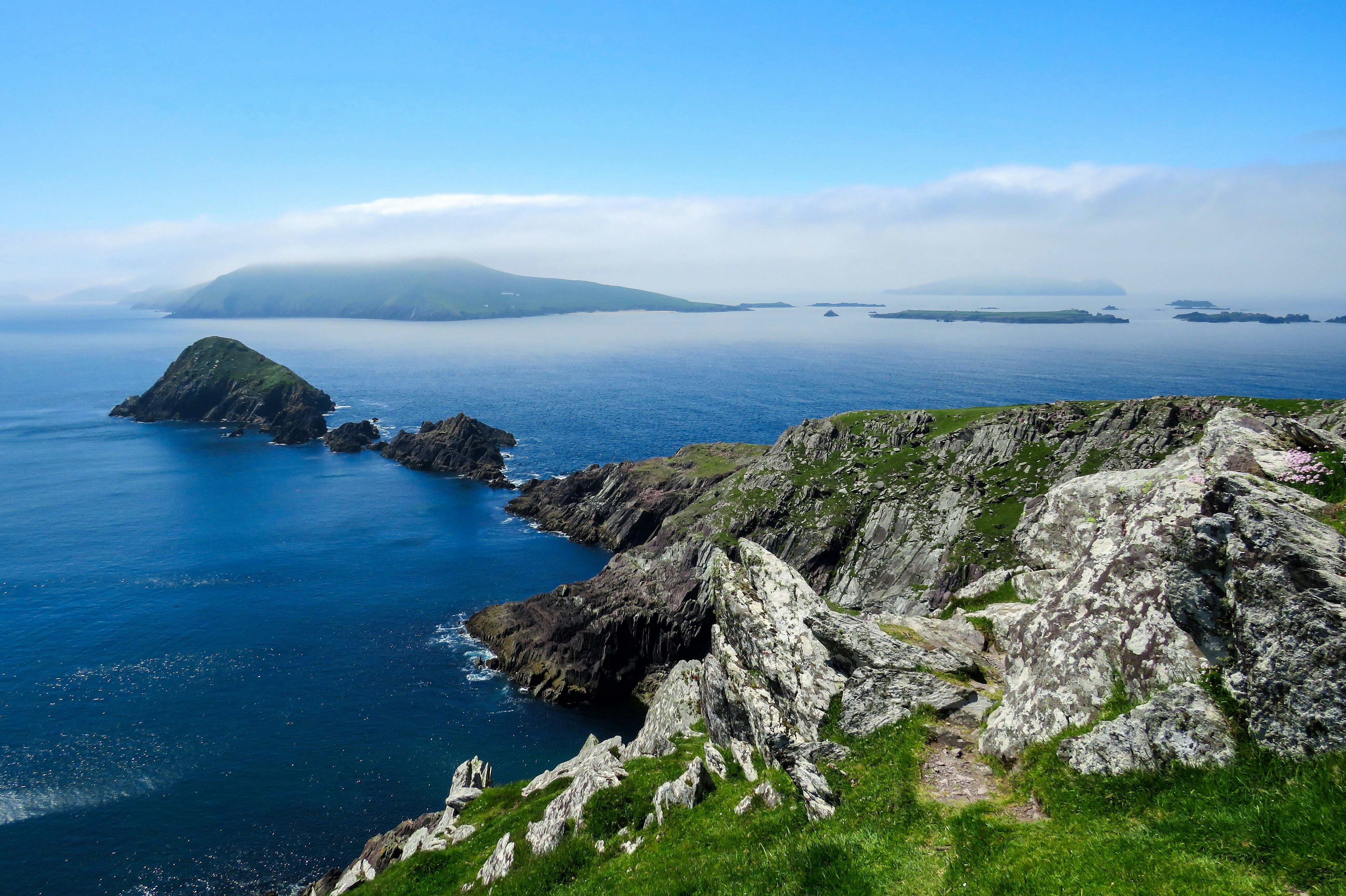
Another Irish mega trail, The Dingle Way is a 179km beast that completes a full circuit of the Dingle Peninsula. It’ll take between 8 and 11 days to walk depending on how fast you go. And as for sheer variety, it definitely matches up to the Beara Trail noted above. Mount Brandon (also noted above) is the crown of this trail, but there’s lots of stunning beauty and history to soak up along the way, too, including the foothills of Slieve Mish, to the rocky cliffs at Slea Head, to the golden sandy beaches or Maharess. You’ll also find plenty of archaeological sites here, too, including lots of standing and ogham stone sites.
The Wicklow Way, County Wicklow
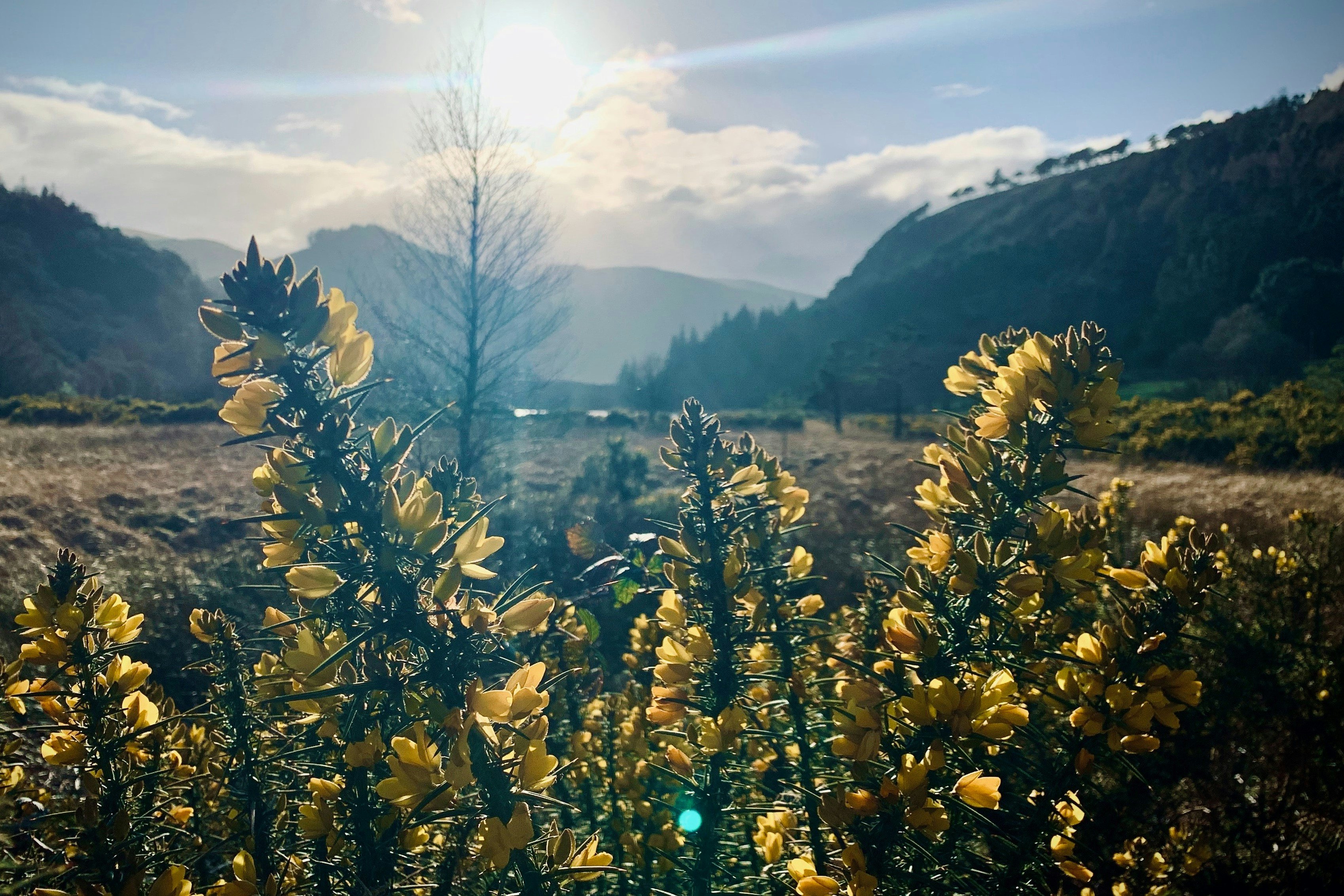
The Wicklow Way is another big one that can be done in parts, but is a little shorter than its big brothers if you wanted to do it all. Beginning in Dublin, and ending in the small County Carlow village of Clonegal 127km to the south, you can get this one done in as little as 7 days! This is a great trail that encompasses plenty of history, as well as rugged mountain passes, fast-flowing streams, meandering meadow walks, and plenty of chances for pit stops.
Dublin Walking Tour, County Dublin
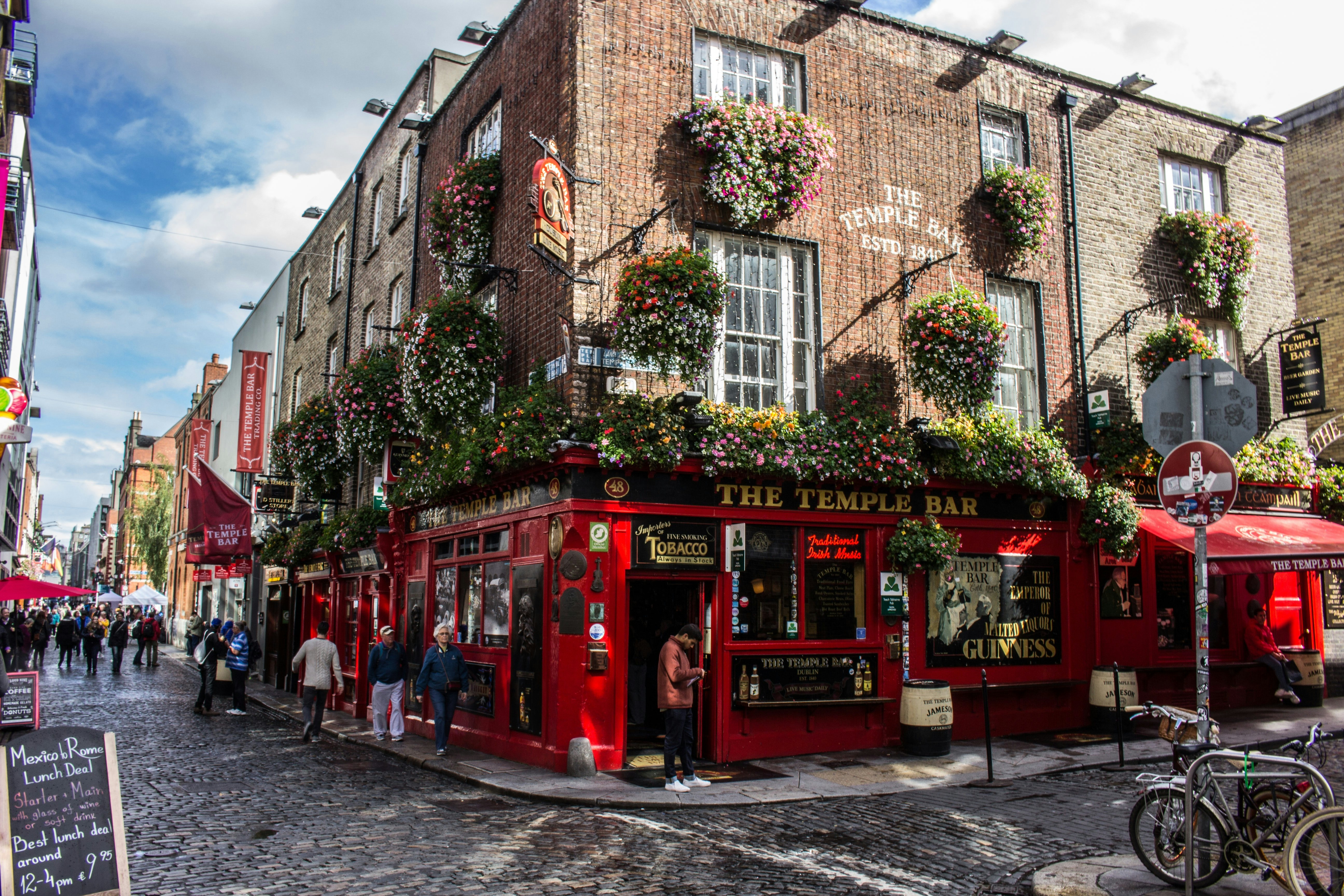
While there’s plenty to see in the wilds of Ireland, if you’re landing in Dublin or find yourself nearby, you should absolutely do a walking tour of the city. A tour of the highlights will include historic sites such as Trinity College, the General Post Office (site of the infamous 1916 East Rising), the Temple Bar district, the Italian Quarter, a stroll along the Liffey River, iconic O’Connell Street, as well as City Hall, the 18th-century St Mary’s Church, Dublin Castle, the former House of Parliament, and so much more! Dublin is a brilliant city to explore on foot or by bus, so definitely cross off a day to see what it has to offer before heading into the idyllic countryside.
Connemara National Park, County Galway
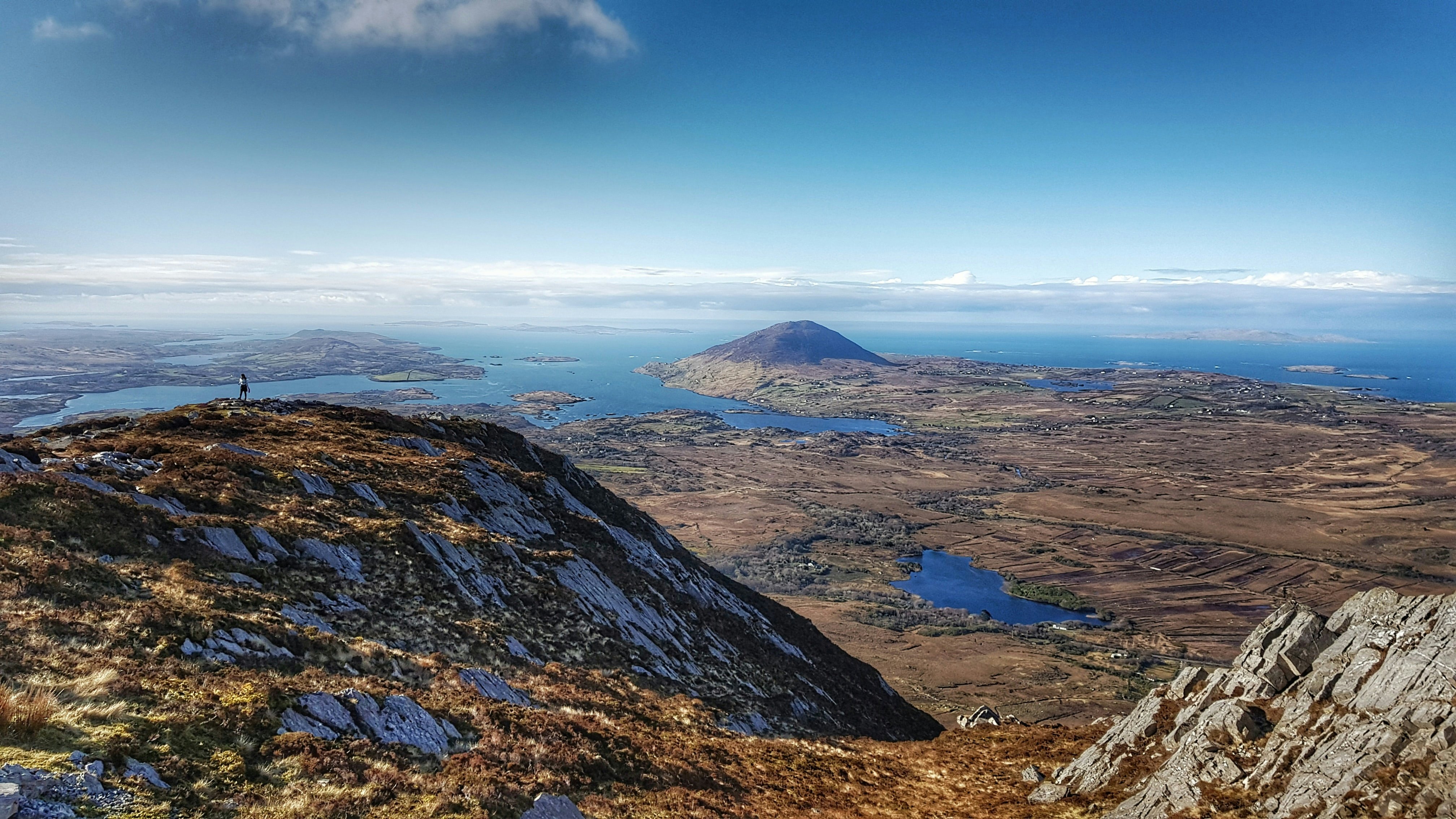
Saving the best for last, Connemara National Park is a personal favourite for a host of reasons. Firstly, the park allows wild camping — and so few places do, but there are exclusion zones so keep an eye out for signages. The visitors centre is open year-round and offers exhibitions on the landscape and history of the park. There are lots of hikes to be had, both busy and quiet, or you can just explore on your own terms, find a spot to pitch a tent, and soak it all in from afternoon until morning. There’s also the amazing Kylemore Abbey to check out, along with so much more, from towering peaks to deserted beaches and coastlines. This place is an adventurer's dream and the perfect place to while away a day … or three.
How to get to Ireland

Ireland is an easy country to reach by both air, and if you live in the UK or northern France, by boat, too. It’s likely that a flight from the UK or Europe will head to either Dublin or Belfast, the two largest airports in Ireland and Northern Ireland respectively, but there are lots of smaller airports that can be flown into, which are closer to some of the attractions above. Dublin and Belfast airports are located to the east and northeast of the country, while Cork and Kerry airports occupy the south and southwest. In the far west and northwest, you've also got Connemara, Knock, and Donegal airports, but they are somewhat smaller and may require a connecting flight from Dublin or Belfast.
If you’d rather take the ferry, you can do so from several places in the UK. The most popular route is from Liverpool, travelling multiple times per day to both Dublin and Belfast. The shortest route is from Cairnryan in Scotland to Belfast, at just over two hours. There are also two routes from Wales to Ireland, too, with a Holyhead to Dublin route, and a Fishguard to Rosslare route both currently active. If you’re in the south of the country, there’s no fast way to get there by sea, but if you find yourself across the channel in France, you can take the rather lengthy boat ride from Cherborg to Rosslare.
The best way to travel around Ireland

Some of the ferries that are active from the UK to Ireland are car ferries, so you can take your own transportation and navigate the country in comfort. If this isn’t an option, the larger airports offer car rental services like any other hub would. There’s also the option of rail, and there are rail passes available, however, they aren’t very useful unless you want to go back and forth to Dublin, where many of the lines begin. Few rail lines criss-cross the countryside, making some of the listed locations above tough to reach by rail alone.
However, thanks to the high-quality bus network on offer, a mixture of rail and bus (providing funds allow), is an efficient way to travel. As Ireland gets so many visitors coming to see the scenery every year, its bus routes are extensive, so mixing trains and buses will get you pretty much everywhere you need to go.
Frequently Asked Questions
Do I need any special permits or passes for hiking trails in Ireland?
Most hiking trails in Ireland are accessible without any special permits or passes. However, it's always a good idea to double-check local regulations and restrictions before starting your hike, particularly if you'll be trekking through private lands or protected areas.
What is the best time of year to hike in Ireland?
While the climate in Ireland is fairly temperate, the best time to hike is generally between May and September, when the days are longer, and the weather is usually milder. However, prepare for wet weather since Ireland receives rain quite frequently.
Wrapping up
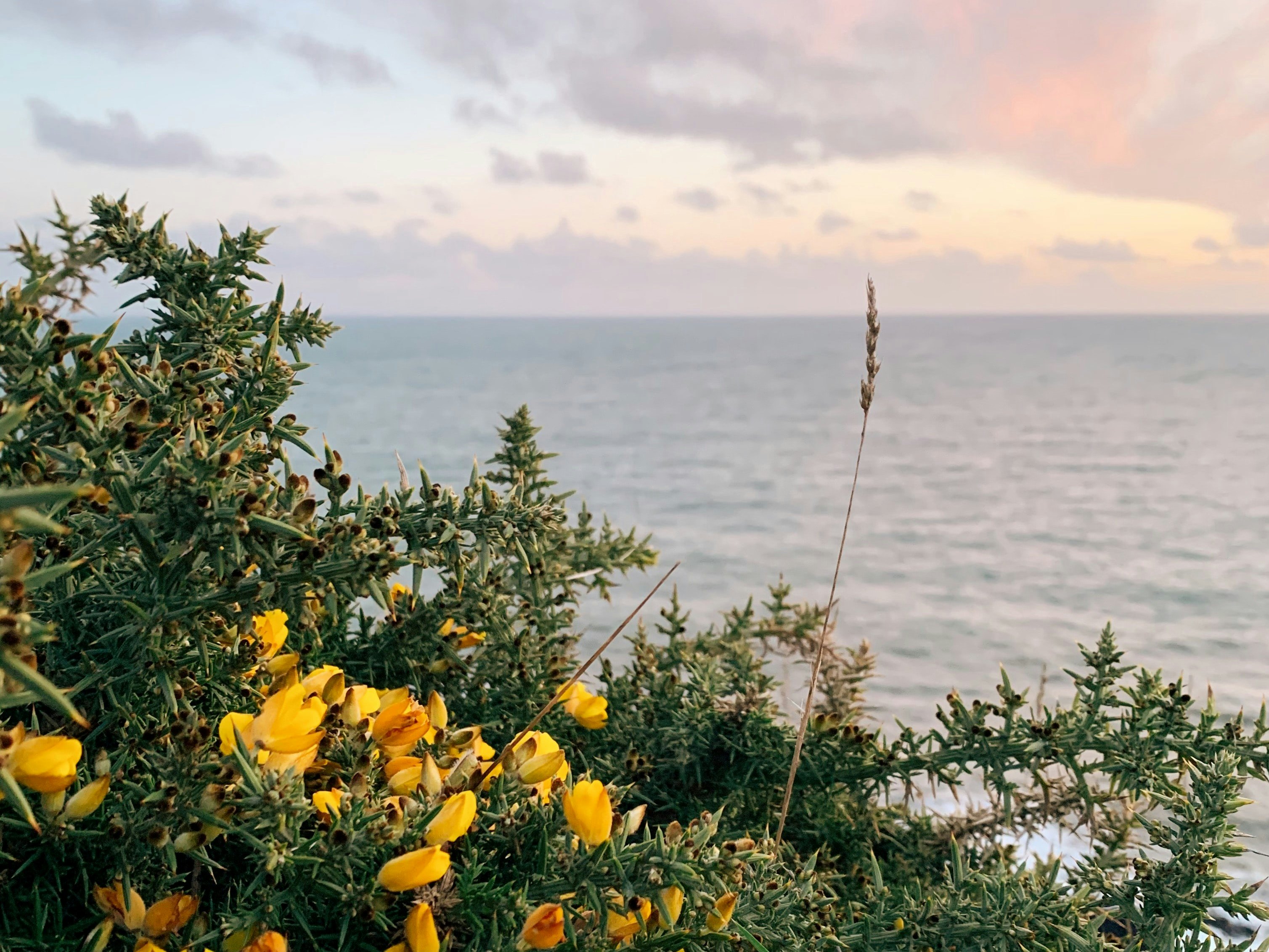
Whether it’s your first time or your tenth time to Ireland, we hope the list above has provided some inspiration for your next trip. Hopefully, now you have all the knowledge you need to book your next trip, and plan the adventure of a lifetime. From millennia old ruins to historically packed routes, from vibrant cities to desolate vistas, from crashing waves and jagged cliffs to peaceful, pastoral lakes, Ireland is a land of many stories and many sides. And we truly, truly encourage you to take the road less travelled to find them all. Okay, so all cards on the table, that’s a Robert Frost quote, not a Jonathan Swift quote. So let us part with this instead: “May you live every day of your life.” And hopefully, you’ll remember that as you step onto Irish soil. I know I always do!
You may also be interesting in:
